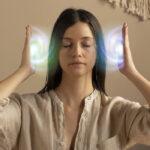“BEAUTIFICATION”
INTRODUCTION
Beyond aesthetics, the notion of beautification weaves a thread across the fabric of the human experience. It explores the essence of our environment and improves our lives by appealing to our senses in a straightforward yet meaningful way. We shall explore the relevance of “beautification” as it appeals to our senses as we dissect its meaning in this investigation.
DEFINING BEAUTIFICATION:
Beautification is, at its essence, the deliberate act of making something more attractive or beautiful. It’s the process of making a place, thing, or experience more aesthetically pleasing overall and visually appealing. Although the phrase is frequently connected to surface-level modifications, its meaning is much more profound, appealing to our basic human senses to produce an experience that is not only aesthetically beautiful but also touches us on the inside.
THE VISUAL SYMPHONY:
The visual element is crucial when considering beautification. It’s the brilliant hues of a setting sun, the tasteful planting of flowers in a garden, or the painstaking layout of a neatly maintained area. The first impression is one of visual attractiveness, which establishes the general mood of our encounter. The symmetry in the design, the harmony of the colors, and the movement of light and shadow combine to create a visual symphony that draws our attention and uplifts our spirits.
AUDITORY ELEGANCE:
Beauty is more than just what we see; it’s also about what we hear, achieving a harmonious balance that enhances our sensory experience. Examples of auditory elements that contribute to beautification are the soft rustling of leaves in the wind, the melodious birdsong in the morning, or the rhythmic sounds of a busy city.
OLFACTORY BLISS:
The sense of scent is a significant contributor to beautification, despite its often undervaluation. The aroma of freshly fallen rain, the pleasant scent of a home-cooked dinner, or the fragrance of blossoming flowers all add to the overall atmosphere. By appealing to our sense of smell, beautification creates spaces that are memorable for their unique scent as well as their visual appeal.
TACTILE HARMONY:
A further dimension of beauty is created through tactile encounters. A sense of harmony and completion can be derived from tactile experiences such as the warmth of sunlight on our skin, the cool feel of polished wood, or the softness of fabric. Beautification is more than simply what we can see; it also involves making areas and items tactile, so that our sensory experience is enhanced on a tactile level.
GASTRONOMIC DELIGHTS:
Beautification reaches into the gastronomic domain in the context of daily encounters. The attractive perfume of a well-cooked food, the vivid colors of fresh ingredients, and the skillful presentation of a dish all enhance the beauty of our dining experience. Creating a feast for the senses—the eyes, nose, and taste buds—while preparing food elevates it beyond simple sustenance to a sensory extravaganza.
EMOTIONAL RESONANCE:
Beautification has emotional importance that extends beyond the senses. A shared experience, a beautiful moment, or a gesture evokes strong feelings that stay with us. The sight of a loved one, the warmth of a smile, or a beautifully laid table for a special occasion—these emotional aspects give the idea of beautifying depth and significance, reaching beyond the sensory to touch our hearts.
CULTURAL EMBEDDEDNESS:
Our customs and cultures have a strong cultural influence on beautification. Cultural features enhance the beauty of our environment, from the elaborate designs of traditional clothes to the architecture of places of worship. It enhances our lives with a sense of identification and belonging by reflecting a common idea of what is visually pleasant within a particular cultural context.
ENVIRONMENTAL HARMONY:
In the modern world, environmental harmony has been included in the definition of beautification. The contemporary definition of beautification is inextricably linked to eco-friendly architecture, green areas, and sustainable activities. It’s not just about making things look nice; it’s also about understanding our duty as stewards of the environment and designing spaces that live in harmony with nature.
CONCLUSION
There is much more to beautification than meets the eye when we examine its intricate fabric. It creates an immersive experience that enhances our lives by engrossing our senses in a ballet of colors, sounds, fragrances, and textures. Beautification is a celebration of the senses and an understanding of the deep influence our environment has on our health. It is not a superficial activity. By welcoming beautification, we enhance our human experience by bringing a symphony of sense pleasures into our lives in addition to visual appeal.
“The concept of “beautification” is wide and inclusive, including aspects of life that touch on both material and immaterial aspects. It is not restricted to surface-level improvements but rather penetrates many facets, adding to a general feeling of fulfillment and enrichment. Let’s examine the broad perspective of beautifying in several spheres of life:”
- Real Spaces:
- Beautification in physical areas refers to improving an environment’s aesthetic attractiveness. This covers the general arrangement of places as well as interior design, architecture, landscaping, and urban planning.
- Public squares, parks, gardens, and cityscapes are all enhanced to make them aesthetically beautiful and inviting to both locals and tourists.
- Individual Appearance:
- Personal style decisions, apparel, and grooming all contribute to one’s overall appearance.
- The beauty industry—which encompasses fashion and cosmetics—contributes significantly to people’s efforts to improve their physical appearance.
- Artistic and Cultural Expressions:
- Cultural and artistic manifestations, which include literature, performing arts, visual arts, and traditional traditions, all exhibit beautification.
- Through celebrating diversity and creativity, cultural events, festivals, and art exhibitions help to beautify societies.
- Psychological and Emotional Health:
- Beautification extends beyond the material world to include the mental and emotional spheres.
- Positive emotions, relaxation, and mental health are enhanced by engaging with visually pleasant situations, artwork, music, and experiences.
- Social Exchanges:
- Thoughtful design and inclusive practices can enhance social places and interactions.
- Positive social experiences and a sense of community are fostered by attractive events, meetings, and public areas.
- Technology and Online Environments:
- Beautification in the digital age encompasses online and technological areas.
- Digital experiences that are aesthetically pleasing and easy to use can be produced through the use of multimedia material, graphic components, and user interface design.
- Sustainability of the Environment:
- Beautification encourages eco-friendly behaviors, which is in line with environmental sustainability.
- Natural landscapes are made more beautiful by conservation initiatives, green infrastructure, and sustainable design.
- Gastronomic Adventures:
- The culinary industry incorporates aesthetics in food jpresentation and dining encounters.
- To improve the experience of dining, chefs pay close attention to the presentation of food, the design of restaurants, and the general atmosphere.
- Well-being and Health:
- Practices for wellbeing and health are entwined with beautification.
- Aesthetics are used in yoga studios, spas, and health retreats to create serene, restorative surroundings.
- Interpersonal Connections:
- Beautification in interpersonal relationships is arranging encounters that are both visually beautiful and meaningful.
- Careful actions, festivities, and group activities enhance the beauty of interpersonal relationships.
- Classrooms and Learning Areas:
- Learning facilities, such as libraries and classrooms, can be made more aesthetically pleasing to improve the learning environment.
- Positive learning environments are enhanced by well-designed learning spaces.
- Workplaces:
- Workplace beautification entails establishing aesthetically pleasing and comfortable spaces.
- Well-thought-out workplace furnishings and design enhance worker happiness and productivity.
- Infrastructure in the Public Domain:
- It is possible to improve public infrastructure—such as transit networks and governmental structures—for the good of the neighborhood.
- An attractive and well-planned infrastructure enhances people’s quality of life in general.
- Individual Routines and Way of Life:
- Individual beauty is influenced by lifestyle choices and personal behaviors.
- Aspects of personal beautifying include self-care, mindfulness, and healthy living.
Table of Contents
ToggleCategories
- Artistic Environments
- Beauty and Wellness Tech
- Culture and Artistic Expressions
- Culture Elegances
- Education and Learning Spaces
- Emotional and Psychological well-being
- EMOTIONAL WELLNESS TIPS
- Environmental Sustainability
- Fashion Forwards
- Garden Renaissance
- Health and Wellness
- Holistic Harmony
- LOVE AND FRIENDSHIP TIPS
- Mindful Spaces
- Personal Appearance
- Personal habits and Lifestyle
- Personal Relationships
- Physical Spaces
- Public Infrastructure
- Redefining Traditions
- Seasonal Spectacles
- Social Interactions
- Technology and Digital Spaces
- TIME MANAGEMENT TECHNIQUES
- WEIGHT LOSS FOR WOMEN
- Workplaces















